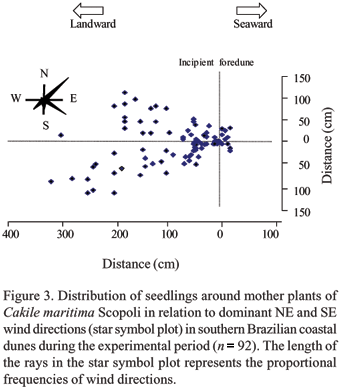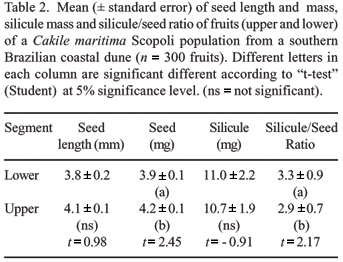Cakile maritima occurs sporadically along the southern Brazilian coast, where it is restricted to more protected sites at the base of foredunes. Somatic dimorphism in C. maritima is manifested as morphologically distinct upper and lower fruit segments (silicules). The two morphs were tested for differences in size, number of seeds, dispersal ability and natural establishment. In the C. maritima population of southern Brazil, the lower silicule has more seeds than upper silicule, and lower seeds are more likely to abort than the upper ones. Seeds from upper segments were significantly larger than those from lower ones; however, their mass ranges overlap. The mean silicule mass was not significantly different from both segments, but the silicule/seed mass ratio from upper and lower segments was significantly different. Both segments had high ability to float in sea water, more than 50% were still afloat after 70 days. Nevertheless, dispersal occurs mainly to landward due to dominant wind action. Most of the seedlings were restricted to within a one-metre radius of the mother plant, and were principally derived from lower fruit segments.
Cakile; dimorphic fruits; dispersal; seed production







